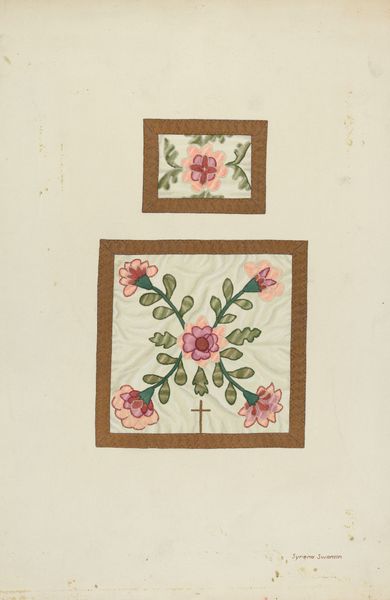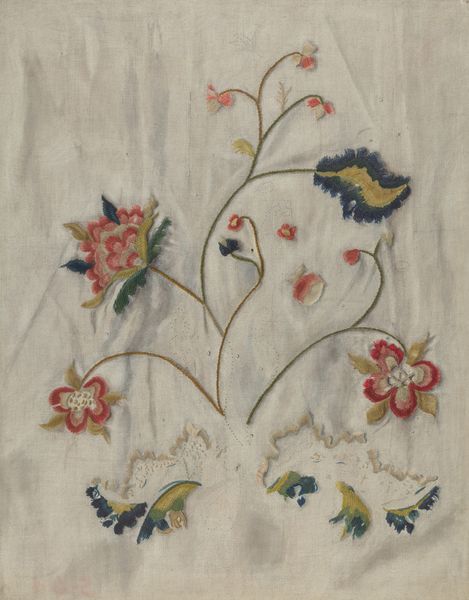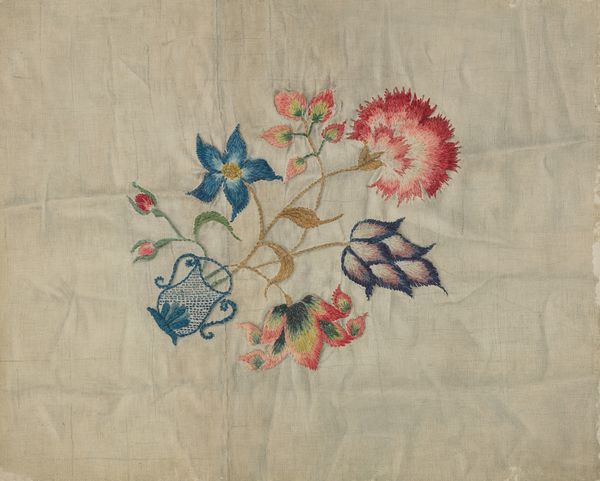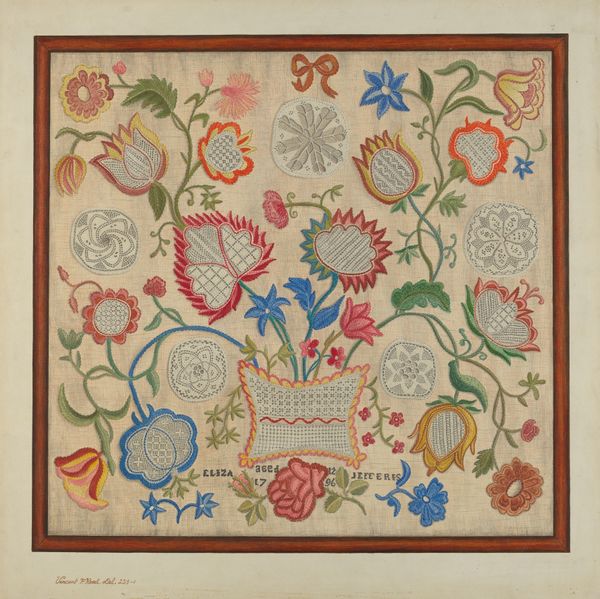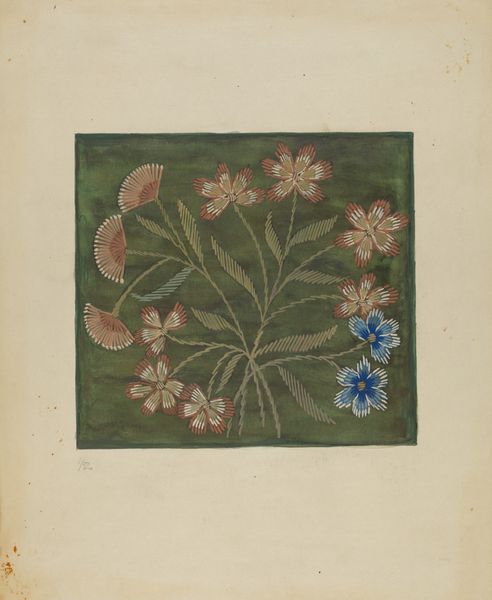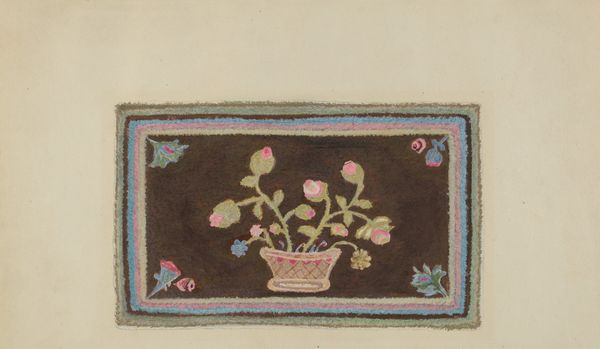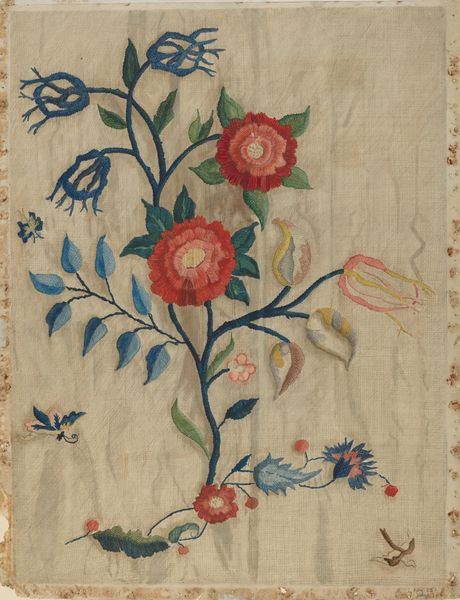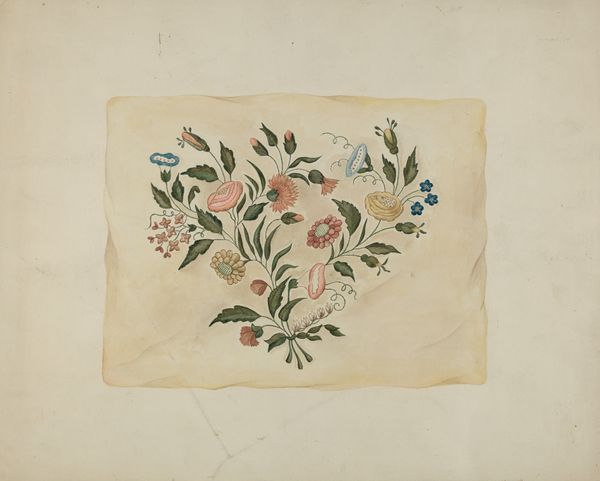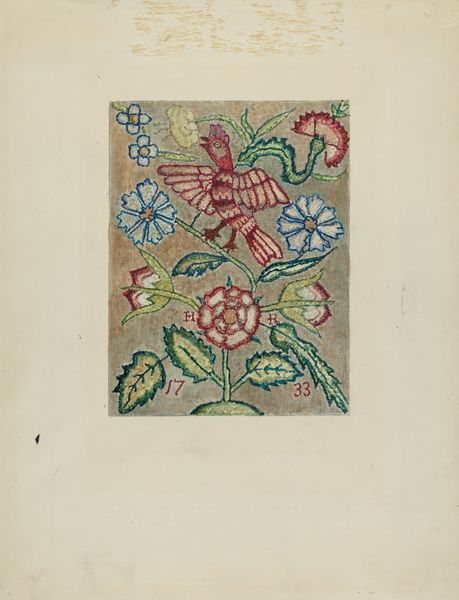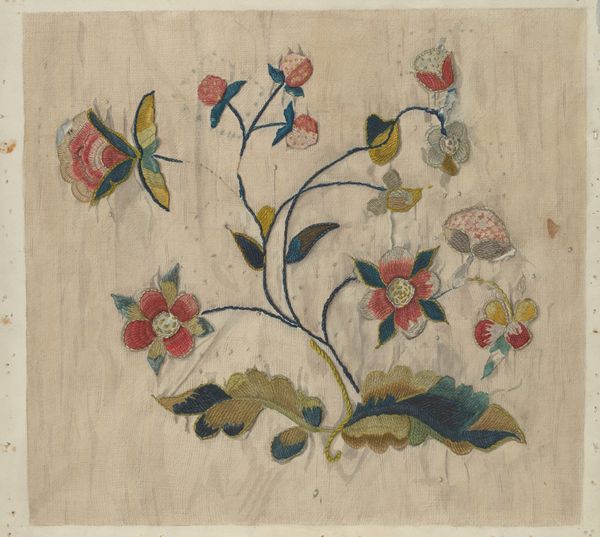
fibre-art, textile
#
fibre-art
#
textile
Dimensions: overall: 28.5 x 36.9 cm (11 1/4 x 14 1/2 in.)
Copyright: National Gallery of Art: CC0 1.0
Editor: This is Phyllis Dorr’s "Piece of Crewel Embroidery," created around 1936. It’s textile art, with clear drawing elements too. The craftsmanship is evident. I’m immediately drawn to the contrast between the deep background and the vividly colored floral motif. What do you see in this piece? Curator: From a formalist perspective, the strength lies in Dorr's masterful manipulation of texture and line. Observe how the density of the stitches in the background creates a palpable sense of depth, pushing the floral elements forward. Consider the artist's deliberate choices regarding color; the vivid reds and yellows play against the muted green, establishing a visual hierarchy and rhythm. Editor: That's interesting. So, you're focusing more on the arrangement and interaction of these visual components rather than any symbolic meaning the flower might hold? Curator: Precisely. Note how the radiating lines of the flower petals create a sense of dynamism, drawing the viewer's eye to the central point. This creates a self-contained visual system. How does the asymmetry affect your perception? Editor: I hadn't really considered that. The bud on one side almost feels like it's pulling the composition off balance, but in a compelling way. Curator: Indeed. It introduces a subtle tension, preventing the design from becoming overly static. Through color, line and texture, the embroidery exists as a study of aesthetic values in their own right. Editor: That helps me see it beyond just a pretty flower design. It's more about how those elements come together. Thank you for a totally unique insight. Curator: You’re welcome. I am glad that you can notice that forms work beyond their mere representation.
Comments
No comments
Be the first to comment and join the conversation on the ultimate creative platform.

